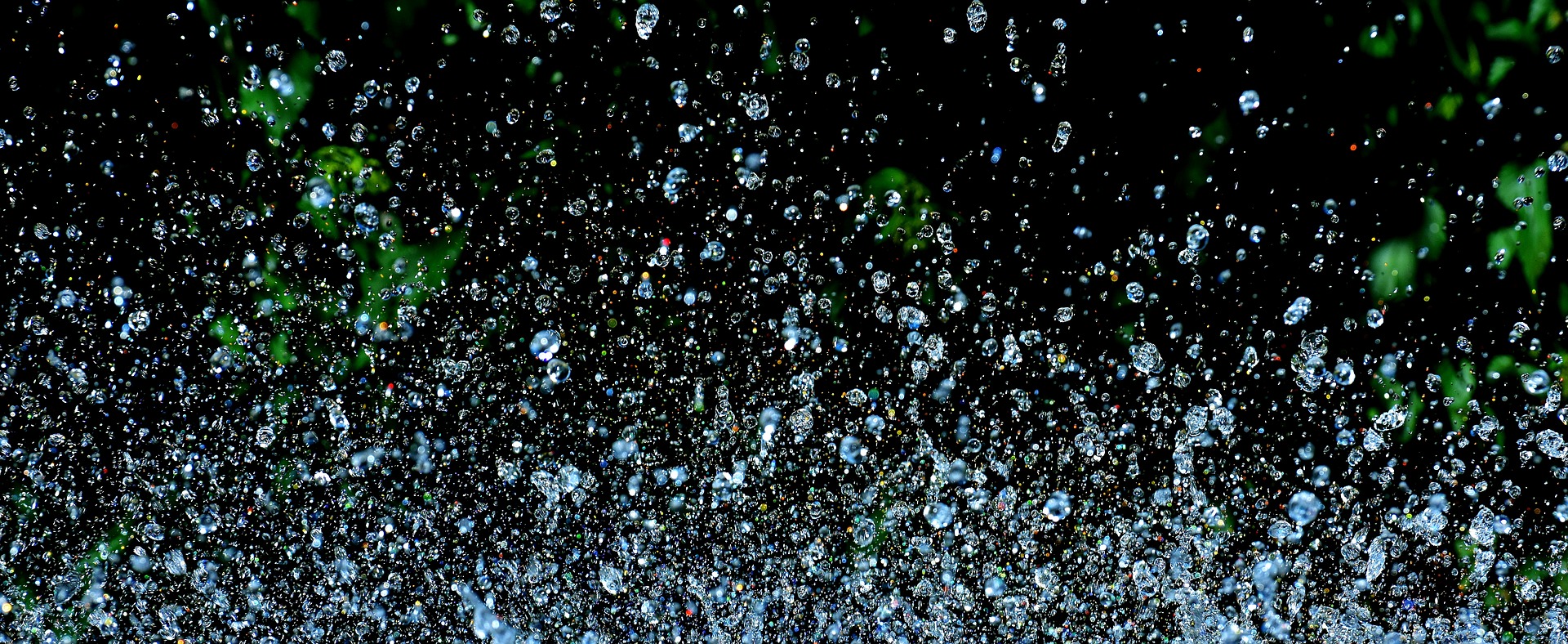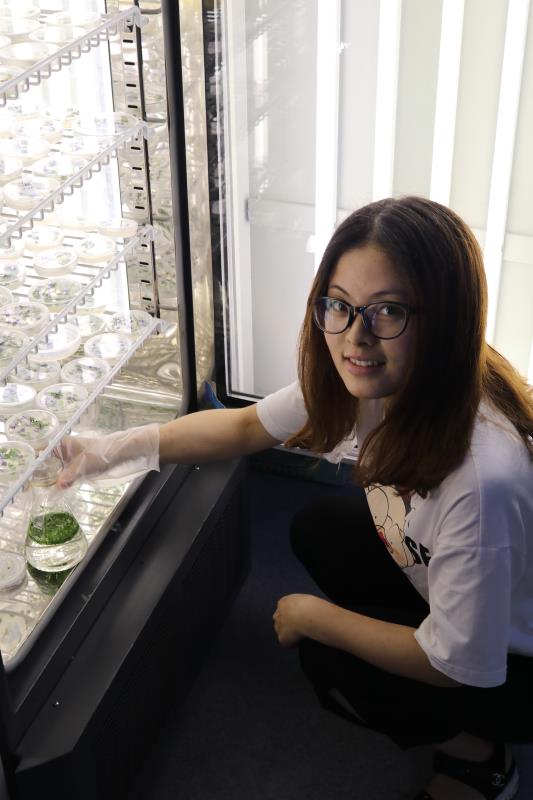
Education
CHEN Yan
Student Spotlight

Yan Chen, Institute of Hydrobiology, Chinese Academy of Sciences, No.7 Donghu South Road, Wuhan, 430072, China
(Email: chenyan.0303@foxmail.com)
I was interested in all kinds of plants when I was a child, for their beautiful appearance. Later, this growing interest made me decide to study plant sciences for my postgraduation. During the Summer Camp-2017 at the Institute of Hydrobiology, Chinese Academy of Sciences, Wuhan, I was fortunate to meet my PhD supervisor, Dr. Hongwei Hou and to be admitted as a bachelor-straight-to-doctorate student at Professor Hou’s lab. Prof. Hou leads a research group of aquatic plant physiology, which is focused on aquatic macrophyte physiology. One of his study areas is duckweed research and application. It was in the summer camp where I had first learned about this amazing tiny plant, duckweed. Duckweeds have small size, simple structure, rapid growth, high protein content, and strong ability for enrichment of heavy metals and many other amazing features, which inspired me to study these plants. Therefore, I chose duckweeds as my research subject at the postgraduate stage.
The afore-mentioned characteristics of duckweeds make them potential subjects of study in the field of plant morphology, development and evolution, as well as in biotechnological applications. On the one hand, duckweeds can contain high protein and can be a rich source of starch, which made them attractive as a potential bioreactor for antibody and alcohol production. On the other, duckweed-based wastewater treatment has been proven to be a feasible and inexpensive solution to remove nitrogen, phosphorus and heavy metals from eutrophic water bodies. In addition, duckweeds are regarded as a good raw material for biotechnological studies, because it has the characteristics of high biomass accumulation rate, short life cycle and easy collection. With heightened awareness of environmental protection, people pay more and more attention to ecological problems such as water eutrophication, atmospheric pollution, soil pollution, and soil erosion. There are several studies on heavy metal enrichment in water plants while it is urgent to clean the toxic substances in water, such as heavy metals. Metal ions are distributed in all components of aquatic ecosystem after entering, which has a strong toxic effect on the ecological environment and organisms including aquatic animals, aquatic plants, and even humans, when the content of metal ions exceeds a certain range.
Therefore, it is necessary to study the mechanism of heavy metal enrichment in plants. In order to understand the mechanism of heavy metal removal by plants, we have studied the absorption and transport of metal ions in Spirodela polyrhiza. Wang et al. (2014) reported the first draft sequence for the genome of S. polyrhiza (Clone 7498), which laid the foundation for studying these mechanisms by molecular biological approaches. It also provides an essential tool for using genetic engineering to develop S. polyrhiza as a platform to remediate aquatic ecosystem. It is reported that duckweeds can absorb heavy metals from the environment mainly through chelation and entrapment, microbial sequestration, physical and chemical volatilization, adsorption and sedimentation,
My work is to study the mechanism of heavy metal enrichment in duckweeds. We hope to improve water quality by using duckweed with strong enrichment capability to absorb heavy metals. In order to achieve this goal, I have cloned some genes of S. polyrhiza which are associated with heavy metal enrichment, as revealed by bioinformatics analysis, including SpNramps (NATURAL RESISTANCE-ASSOCIATED MACROPHAGE PROTEIN), SpGSH (GLUTAMATE-CYSTEINE LIGASE) and SpPCS (PHYTOCHELATIN SYNTHASE). To better understand the regulation of these genes, cloning of their promoters and their functional validation in yeast and Arabidopsis model systems were also performed.
Based on the result obtained from heterologous expression in yeast, I have found that SpNramps, SpGSH and SpPCS genes are able to transport metal ions and SpGSH and SpPCS gene have great ability for cadmium transport. It was also found that the promoter of these genes attached to GUS was mainly expressed in the root and the reproductive pouch. Apart from my focus on the mechanism of SpNRAMPs, SpGSH and SpPCS genes involved in metal transport in duckweeds, I also try to study the effects of the three detoxification methods viz., "isolation", "antioxidation" and "chelation". Our experiments attempt to analyze the mechanism of duckweed tolerance to heavy metals and then identify the optimal lines that can tolerate high levels of metal absorption for water restoration and the sensitive strains for monitoring water quality, as well as to discover the reasons for the tolerance and hypersensitivity of transporters in higher plants.
Cadmium, arsenic and other heavy metals are highly biotoxic in the environment, some of these not only affect the normal physiological metabolism and growth of plants, but also can enter the food chain, thus endangering the health of animals and humans. At present, most of the information about the harmful effects of heavy metals on plants focus on the external manifestations, ultrastructure, peroxide stress, antioxidant enzyme system, photosynthetic system, yield and quality of crop products and effects on the root system of terrestrial plants. However, the molecular mechanisms and pathways of tolerance and toxicological effects of heavy metals on aquatic plants remain to be clarified. Therefore, my research will use the SpNramps, SpGSH and SpPCS genes to study heavy metal enrichment mechanisms in S. polyrhiza. In addition to measuring the physiological and biochemical indices of the plants, we will also study the oxidative stress induced by cadmium and other heavy metals more comprehensively by fluorescence quantitative analysis, Western blot, RT-PCR and other methods, and try to understand the response mechanism of S. polyrhiza to heavy metal stresses. To some extent, it is expected to provide a theoretical basis for the study of heavy metal enrichment in aquatic plants. Further, we want to develop S. polyrhiza as a monitor for heavy metal pollution in the aquatic ecosystem, and to identify a strong enrichment plant variety with high tolerance to remediate wastewater polluted with heavy metals. (Duckweed Forum)
File Download: